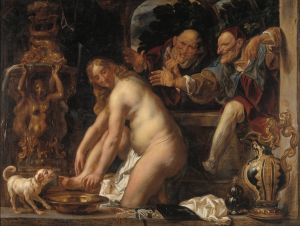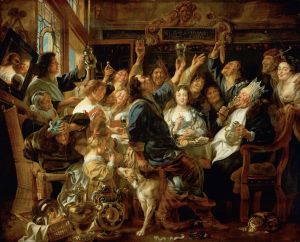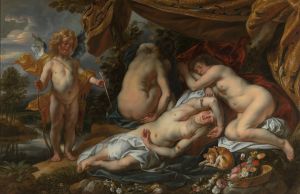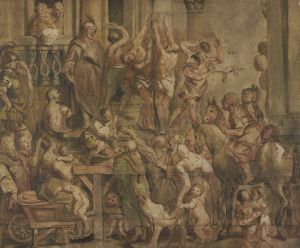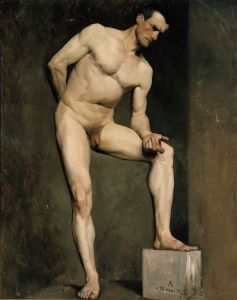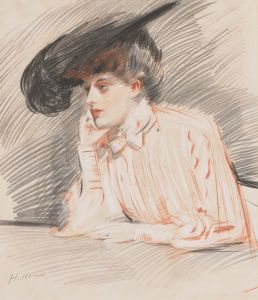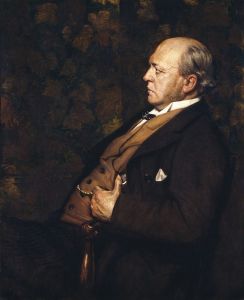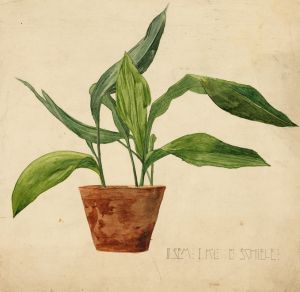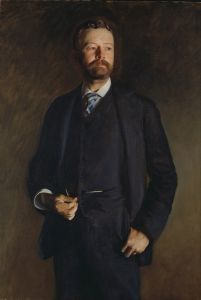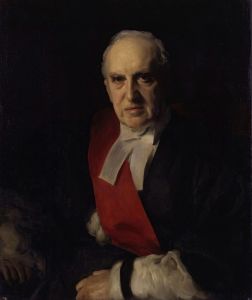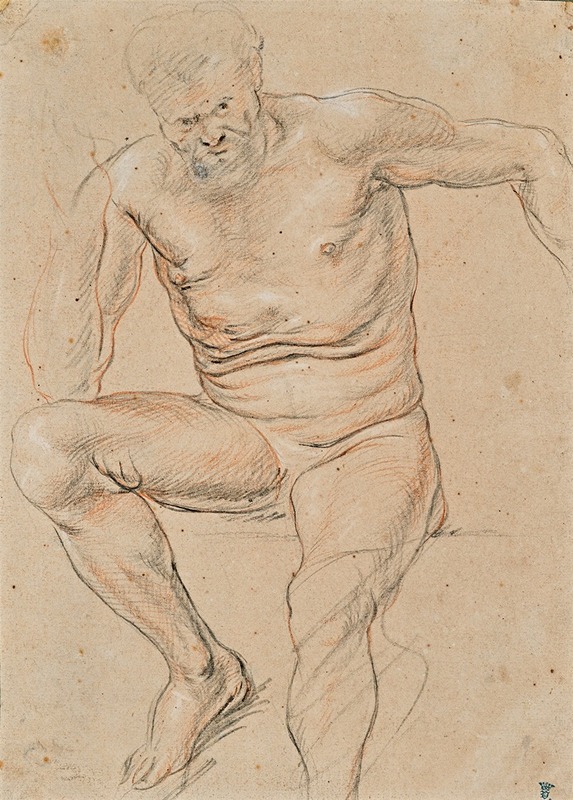
An academy of a male nude seated
A hand-painted replica of Jacob Jordaens’s masterpiece An academy of a male nude seated, meticulously crafted by professional artists to capture the true essence of the original. Each piece is created with museum-quality canvas and rare mineral pigments, carefully painted by experienced artists with delicate brushstrokes and rich, layered colors to perfectly recreate the texture of the original artwork. Unlike machine-printed reproductions, this hand-painted version brings the painting to life, infused with the artist’s emotions and skill in every stroke. Whether for personal collection or home decoration, it instantly elevates the artistic atmosphere of any space.
Jacob Jordaens, a prominent Flemish Baroque painter, is known for his dynamic compositions and vibrant use of color. However, specific information about a work titled "An Academy of a Male Nude Seated" by Jordaens is not readily available in historical records or major art collections. Jordaens' oeuvre primarily consists of large-scale historical and religious paintings, genre scenes, and portraits, which are well-documented and studied.
Jordaens was born in Antwerp in 1593 and became one of the leading artists in the city after the death of Peter Paul Rubens. He was known for his ability to depict human figures with robust physicality and expressive gestures, often infused with a sense of realism and vitality. His training under Adam van Noort and his exposure to the works of Rubens and Caravaggio influenced his style significantly.
In the context of Jordaens' work, studies of the human form, such as male nudes, would have been part of his artistic practice, especially during his training and in preparation for larger compositions. Artists of the Baroque period often engaged in life drawing sessions, known as academies, where they studied the human anatomy to improve their skills in rendering the human body accurately and expressively. These sessions were crucial for artists who aimed to depict complex biblical and mythological scenes that required a deep understanding of human anatomy and movement.
While specific details about "An Academy of a Male Nude Seated" are not documented, it is plausible that such a work, if it exists, would have been a study or sketch rather than a finished painting. These studies were typically not intended for public display but served as essential tools for artists to refine their techniques and prepare for more elaborate works.
Jordaens' contribution to art extends beyond his paintings; he was also a tapestry designer and a skilled draughtsman. His works are characterized by their lively compositions, rich color palettes, and the ability to convey narrative through expressive figures. His paintings often depict scenes of everyday life, imbued with moral and allegorical meanings, reflecting the cultural and social milieu of 17th-century Flanders.
Despite the lack of specific information about "An Academy of a Male Nude Seated," Jordaens' legacy as a master of the Baroque style remains significant. His works are housed in major museums around the world, including the Royal Museum of Fine Arts in Antwerp, the Louvre in Paris, and the Prado Museum in Madrid. These institutions preserve and display his paintings, allowing audiences to appreciate his contribution to the art world.
In summary, while there is no detailed information available about "An Academy of a Male Nude Seated" by Jacob Jordaens, his broader body of work and his influence on the Baroque period are well-recognized and celebrated. His ability to capture the human form with vigor and emotion continues to be admired by art historians and enthusiasts alike.






